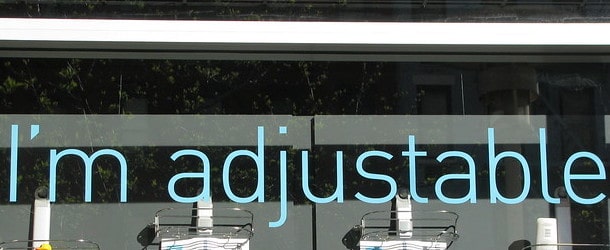Declaring that ARMs are back, United Wholesale Mortgage (UWM) has just rolled out a new line of adjustable-rate mortgages for its mortgage broker partners.
The new offering from the nation’s largest wholesale mortgage lender includes a 5-, 7-, and 10-year ARM to flank the usual fixed-rate options, such as the very popular 30-year fixed and the shorter-term 15-year fixed.
What makes these loans interesting is the fact that they come with significantly better pricing than fixed-rate mortgages currently available with other lenders.
And that might be enough to change the ARM argument, which has been decidedly dour for years now thanks to record low fixed mortgage rates.
How Long Will You Actually Keep Your Home Loan?
- Something like 90% of purchase mortgages are 30-year fixed loans
- And roughly 80% of all mortgages including refinances are 30-year fixed loans
- Yet less than 10% of borrowers actually keep their home loan for more than seven years
- This means the bulk of homeowners with a mortgage are overpaying for the perceived safety of a fixed interest rate
UWM aptly points out that fewer than 10% of borrowers stay in the same mortgage for more than seven years, yet something like 80% of mortgagors hold 30-year fixed mortgages.
In other words, a large majority are paying too much for their home loan, yet never actually receiving the benefit of an interest rate that is fixed for the life of the loan.
And because many adjustable-rate mortgages come with a lengthy initial fixed-rate period, many of these homeowners could actually benefit from an ARM without ever worrying about a rate adjustment.
UWM notes that pricing on its 7-year ARM could be anywhere from 50 to 75 basis points (.50%-0.75%) better than a 30-year fixed loan.
For example, if a 30-year fixed is priced at 3%, it might be possible to get a 7-year ARM for 2.25%.
If we’re talking about a $350,000 loan amount, that’s a payment difference of about $140 per month and roughly $18,000 in interest saved over 84 months.
That’s the draw of an ARM – to save you money while also providing a lower monthly payment while you hold the thing.
And if you get rid of it during the fixed-rate period, which in the case of these loans is 5, 7, or 10 years, you essentially win.
Are ARMs Set to Get Popular Again?
- Adjustable-rate mortgages have mostly been a home loan choice for the very rich lately
- The ARM share was just 3.8% of total mortgage applications last week per the MBA
- That may begin to change as mortgage rates rise and lenders embrace ARMs again
- UWM has been a leader in mortgage innovation so this could be a sign of things to come in the industry
Chances are ARMs will gain in popularity as fixed rates begin to rise, assuming that happens over the next few years.
They may appeal to both new home buyers who want a lower interest rate, and existing homeowners who want to tap equity via a cash out refinance.
The adjustable-rate mortgage was super popular during the housing boom in the early 2000s, though they often featured extra-risky options like interest-only payments and negative amortization.
While an ARM is still a risk to some degree, given you don’t really know where interest rates will be at first adjustment, those who do have a clear vision can benefit, as illustrated above.
UWM’s suite of ARMs are all tied to the newly-launched Secured Overnight Financing Rate, otherwise known as SOFR, the LIBOR’s replacement.
Additionally, they all adjust every six months once they become adjustable, meaning they are 5/6, 7/6, and 10/6 ARMs.
This can be slightly more stressful than an annually adjusting ARM, such as the popular 5/1 ARM or 7/1 ARM.
The good news is the cap at each adjustment is just 1%, meaning the interest rate can’t increase by any more than one percent every six months.
And remember, the first adjustments don’t start for 60, 84, or 120 months, respectively, which as UWM noted, shouldn’t affect many homeowners who either sell their homes or refinance before that time.
The new ARMs are available on primary, second, and investment properties, for purchases, rate and term refinances, and cash out refis.
They are conventional loans (backed by Fannie Mae or Freddie Mac) and a minimum FICO score of 640 is required, with a maximum loan-to-value (LTV) ratio of 95% is permitted.
UWM has been a bit of a vanguard in the mortgage space, so there’s a good chance other mortgage lenders will soon follow suit and begin offering ARMs at a discount to their fixed-rate counterparts.
- Rocket Mortgage Completes Redfin Takeover, Offers $6,000 Home Buyer Credit - July 1, 2025
- Mortgage Rates Quietly Fall to Lows of 2025 - June 30, 2025
- Trump Wants Interest Rates Cut to 1%. What Would That Mean for Mortgage Rates? - June 30, 2025

